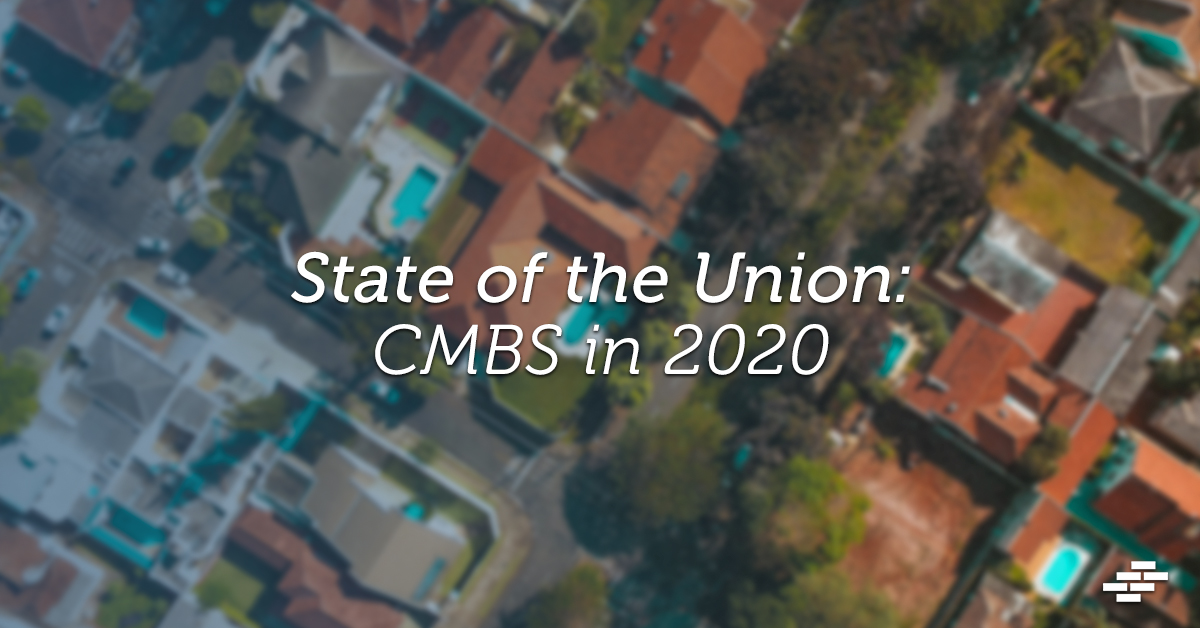CMBS Great Again in 2020? State of the SFR Investing Market

By Tim Leber.
Since the presidential election in 2016, what has changed? Well, without going off into too much of a Twitter tangent, we’ve seen some strong economic growth followed by periods of cooling, a revolving door of cabinet positions, ongoing investigations with seemingly endless outcomes, up and down tariff wars & trade deals, and an interest rate that doesn’t seem to know where it should end-up. As a result of these, a bit of doom and gloom exists on the horizon amidst a volatile capital markets environment.
Where do we go from here?
Perhaps the biggest challenge though, in our niche of commercial real estate finance for single family rental (SFR) property, is that interest rates still have no clear path. The feds indicated that there would be several rate hikes at the beginning of 2019 but have since been back on the fence about it. As we approach the July fed meetings, their decision could still swing either way. While there continues to be fear of economic recession, it will take a lot to see treasuries dip to their mid-2016 levels in which we saw the 10-year hit historic levels. What does it mean for real estate investors and their upcoming financing needs? For one, it may mean that now is the time to lock in a 10-year loan. The recent flight to the safety of bond and U.S. treasuries provides some evidence and motivation for borrowers to lock in low rates for their SFR portfolios.
What are the options?
The current debt market available to SFR investors offers several options, but the main groups serving SFR portfolio loans are local or regional balance sheet lenders (banks), private “hard money” lenders, or specialty lenders offering commercial mortgage-backed securities (CMBS). While hard money lenders can offer investors a short-term and fast-acting solution to their one-off debt requirements in limited amounts (at an often higher cost), turning to a bank or commercial lender will be the most practical and economically sound option for a sophisticated investor when it comes to aggregating large portfolios of SFRs in which a reliable capital source is needed.
Understanding CMBS
CMBS loans, in which the individually-issued loans will be used as collateral for a bond offering, are utilized by some lenders in the SFR space as an effective non-recourse vehicle to provide long-term debt for investor-owned SFR portfolios. Applying a REMIC structure allows a lender to pool mortgage loans and issue mortgage backed securities, which in turn allows interest in this trust to be bought by investors. Without getting too far in the weeds on the process, it’s important to remember that a lender utilizing securitization as the back-end execution after funding allows for an almost unlimited ability to issue loan commitments to any one borrower, unlike other sources which hold accumulating loans on their balance sheet.
What marks a CMBS loan and how does it benefit you in an SFR portfolio refinance?
There are very distinctive components and certainly pros and cons for every type of loan. The bottom line comes down to a few factors that investors need to be able to spot when deciding which loan to choose. In a rental portfolio loan, the distinguishing factor from bank debt or other sources of capital, is that the loan is non-recourse. Most bank debt will only be available to borrowers who are comfortable signing a personal guaranty on the deal, where, in the event of a default, the lender could come after the individual’s personal assets. These personal guaranties make sense for some smaller deals, due to interest rates being competitive, but it creates a large risk exposure for a single sponsor looking to aggregate more than five to ten properties.
More benefits of the CMBS loan
One of the other distinguishing factors of a CMBS loan is the ability to offer higher leverage on the portfolio. Many specialized SFR portfolio loans, like the ones offered by CoreVest, will enable borrowers to leverage up to 75% of the value if the NOI can support the debt service. Typically, they are underwritten much like a multifamily cash flow, but assumptions for maintenance, capex, or turnover may be bumped up to accommodate the higher cost of an SFR maintenance schedule. This cash flow is then underwritten against a Debt Service Coverage Ratio to make sure lender requirements are met. Typically, these can be between a 1.20x and 1.25x DSCR minimum.
Regional banks will generally cap their LTV at around 60%-65%, even for the most qualified borrowers. At the end of the day, banks are lending based on the financials and the ability of the borrower themselves rather than the properties as collateral. It will be easier for a bank to bet on the sponsor’s strength when it comes time to collect on a defaulted mortgage, and this needs to be considered when selecting the best source of debt for any acquisition or refinance.
Summary
Even with volatility in the market, there is still tremendous opportunity to find and acquire underperforming assets or recapitalize on existing equity in an already owned rental portfolio. The key for investors in this environment is to partner with lenders who understand the business and have designed loan products custom tailored to their needs for a short or long-term investment strategy.
Are you looking for capital for your next investment property? Our creative financing options have helped thousands of investors finance more than 40,000 units and close over $5 billion in loans. Contact us to explore your options. CoreVest is the leading lender to residential and multifamily real estate investors.
We provide attractive long-term debt products for stabilized rental portfolios as well as credit lines for new acquisitions. For more information about how CoreVest can help you grow your rehab or rental business, please call Tim Leber at 949.344.7889 or email [email protected].
#IG